This well-worn 1957 Martin 000-18 has definitely earned some ‘spa treatment’ – a neck reset, refret, and side crack repairs.
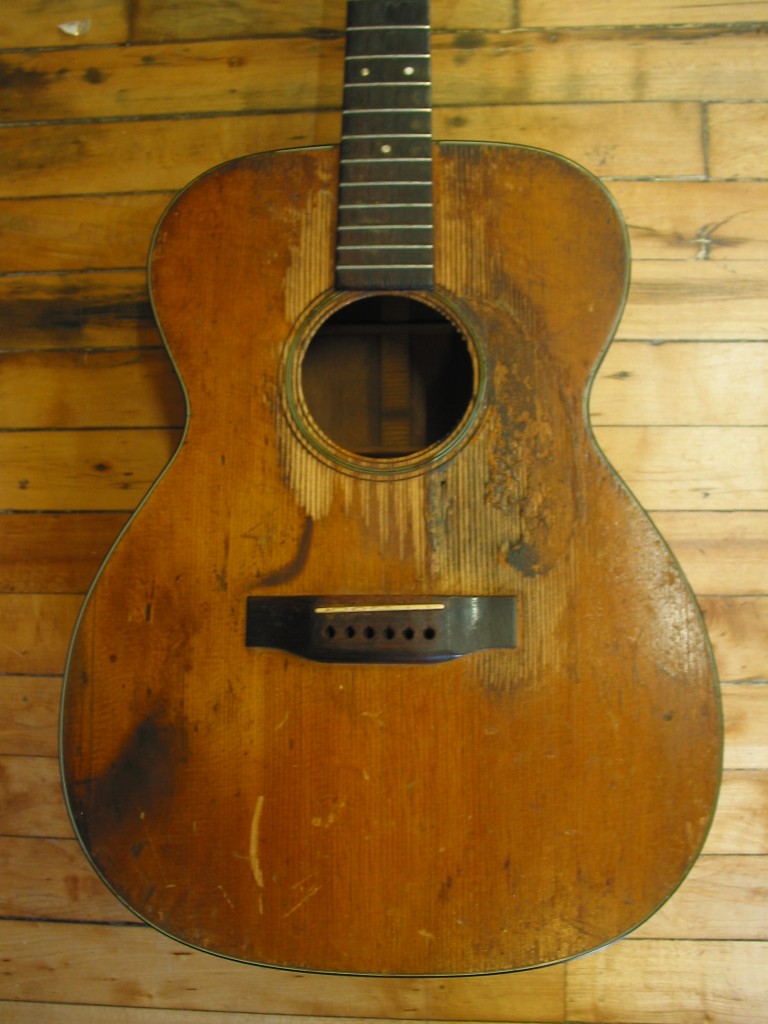
Guitars are meant to be played and enjoyed, so it always makes us smile to see one that has clearly been doing just that. This 1957 Martin 000-18 wouldn’t color its hair to hide the gray; it wears its age proudly. So we put away the airbrush and the buffing wheel and focused on getting it structurally stable and playing better than ever. It took a neck reset, refret, and some sealing of cracks to get it there, but the results were worth the effort.

The cracks on the sides are pretty severe. It will take some patching and, okay maybe a little touch-up to get them stable.

Here, Dan gets the side pieces to fit together perfectly before gluing and clamping them back together.

He fills the larger gaps with mahogony and colored epoxy, then files it level.

Some stain and grain lines were enough to make these patches look like they belong.

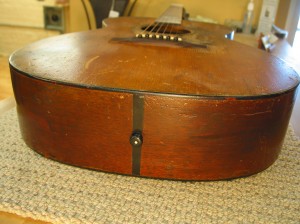
Next it’s on to the neck reset. This is a well-known and well-documented procedure where the neck is removed from the body and the dovetail joint is re-shaped to achieve correct playing action. More than 50 years of steel strings pulling on the neck has compressed the wood inside the joint and made the strings sit unbearably high.
Not every guitar is worth the trouble and expense involved in a neck reset, but a Martin holds its value very well. Even one that looks old and worn out like this is a no-brainer for this job.

First we use an electric heating element to soften the glue under the fretboard tongue.
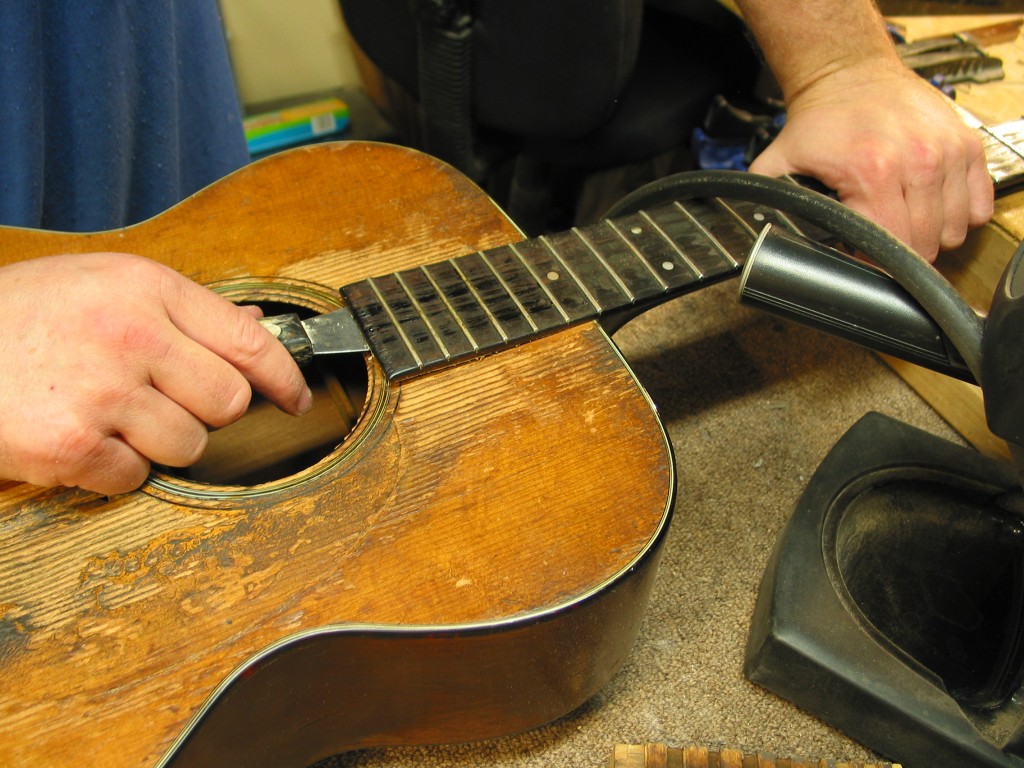
Once the tongue is loose from the body, we drill 2 small access holes through a fret slot and inject steam from an espresso maker to loosen the glue inside – the second hole provides a route for the steam to escape. The wooden jig helps push the neck out of the dovetail joint once it comes loose.

Once the neck is off, we quickly remove the old glue residue from both the neck and body before it hardens and prepare both the neck pocket and the neck heel for resetting.
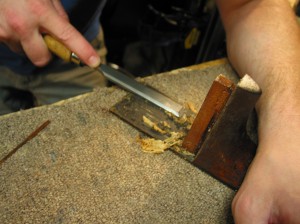

Dan uses a razor sharp chisel to remove tiny layers of mahogany from the neck heel. Then to really zero it in, he pulls strips of sandpaper to make tiny adjustments until the angle is just right.


We like to say that baseball is called a “game of inches” and guitar repair is a game of thousandths of an inch. Each pull of sandpaper changes the angle ever so slightly; so he counts how many pulls he does on one side of the neck heel, then does the same number of pulls on the other side.

When the neck angle is just right, it gets firmly clamped and glued back into place. When the glue is set, it’s time to replace the old frets.

To soften any glue inside the fret slots, Dan heats each fret with a modified soldering iron and carefully pulls it out.

Once the frets are out, he uses a carpenters level and adhesive sandpaper to level the fret board.

Next he cuts each new fret and hammers it home.

The new frets have to be trimmed, shaped, and leveled before polishing.


Since the new frets sit slightly taller than the old worn ones, we made a new bone nut. This lets the strings clear the fret tops without buzzing.
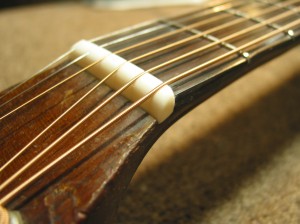
The improved neck angle allows us to get the playing action perfect, with enough saddle left for adjustments over the coming years.

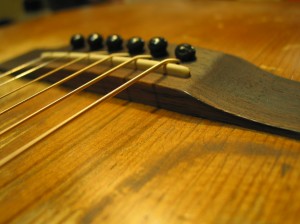

A neck-reset can effectively give an old guitar like this a new life, promising many more years of music. It would have been a shame to hang this guitar on the wall when that 50 year old wood makes such a sweet sound!

I called u earlier today about a Washburn guitar 5200 I wanted to send u a photograph before I drive to the northside from bensenville my number is 630 808 1013
Hi. I am the owner of the Martin in this article. This guitar has been STOLEN from someone in Peoria Heights Illinois. Could I get the serial # from you great guys and maybe you could put the word out. This happened about 2 1/2 years ago. Maybe send me some advise. Best regards, Brian Martin
meant to say STOLEN by someone. Just a bit upset seeing the old girl again. Brian
Brian,
Two apologies – one for just seeing your question/comment now. That’s terrible news about your guitar. The second because unfortunately we were not keeping accurate records of serial numbers at the time of this repair. I wish I could offer some help beyond best wishes that it somehow turns up again for you.